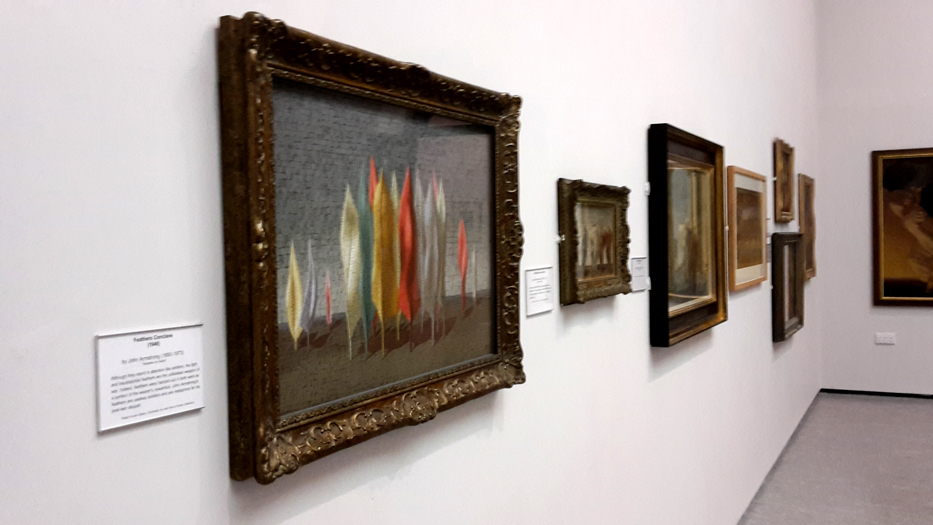With trains leaving Liverpool Central every fifteen minutes it’s a pleasant ride past fairways and woodlands to see John Armstrong: Dream and Reality at The Atkinson in Southport.
John Armstrong ARA (1893-1973) described his own art as ‘handsome if peculiar paintings’, and a video showing interviews with this third wife Annette and an assistant Mary Collette, amongst others, gives you an insight into the psyche of the man. For example, Armstrong was no fashionista but Annette tells us he would have his brown shirts dyed a particular shade of blue at a time when blue shirts did not exist. Similarly, Mary says he always conceived a picture in its entirety and never deviated from it.
Said to be multi-talented and a multi-tasker, over seventy of his pictures fill Galleries 2 and 3 on the first floor. The works touch on Armstrong’s time as an official war artist on the home front during the Second World War, his interest in the Surrealist movement and beyond, his poster designs for Shell and forays into costume design for theatre and film.
Nocturne (1947), the very first picture in Gallery 2, seduces you into the world of surrealism with the image of a long, withered leaf reclining like a classical goddess from the Old Masters.
Armstrong’s strong anti-war stance is reflected in his Battle paintings. One, The Battle of Nothing (1949), showing an incongruous image of a group of clowns holding wooden swords fighting a non-existent enemy. This is underlined by September 1940 (1941) in Gallery 3. The twisted and gnarled swastika-covered German fighter planes on a beach, under dark skies, failing to leave you with a sense of victory, but rather the notion that there are no winners in war.
As you stroll through the peaceful Victorian rooms, the images flow through the opposing spaces in a kaleidoscope of time, theme and media, but Armstrong’s muted colour tones anchor you to the fact this is the work of one man’s life.
The exhibition is supported by some of Armstrong’s contemporaries including Sir Roland Penrose and Marion Elizabeth Adnams, throwing a spotlight on how British artists responded to the Surrealist movement. Surprisingly, for those not in the know, like yours truly, there is also a surrealist oil on canvas by the zoologist and TV presenter Desmond Morris.
We are told Armstrong loved to paint because, for him, what he painted was unreal and he loved that escapism. He only stopped six months before his death at 79, thwarted by Parkinson’s disease and as I made my way back out into the afternoon sunshine, I couldn’t help but wonder if John Armstrong was a man who really lived the dream.
Posted on 14 July 2017 under Exhibitions, Review







